You can expect to see shedding with any dog; this is a healthy part of their life. Hair loss is not so common though, and usually indicates an underlying health issue.
But, how can you tell the difference between the two? When the effect is the same, i.e dropping hairs, when is it time to worry?
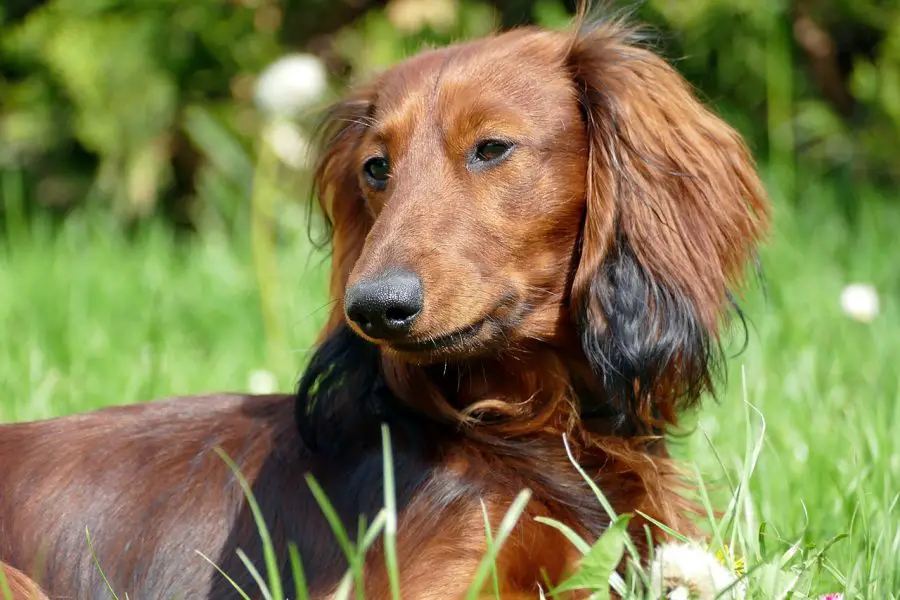
Shedding can be characterized by losing hair evenly all over the body. Hair grows back as fast as it drops out.
Plus, your dog’s coat should be shiny and healthy. Where we can detect hair loss, is when large bald patches are visible.
Their coat will be thin and they may drop large clumps of fur. Their skin will likely be scaly, red or even infected.
When they are losing a large volume of hair that isn’t growing back, we can consider this hair loss.
Hair loss is not to be ignored. When a dog’s skin is exposed, they can become more susceptible to sunburn and extreme cold.
Their fur coats protect their skin and keep them insulated. What’s more, hair loss often goes hand in hand with itchy skin, leading to lesions or infections.
Luckily, many of the causes of hair loss are temporary and easily treated. But it’s best not to ignore the fact that it’s happening.
Even if it is easy to treat with creams. Hair loss could point to a more serious health condition, which left untreated, could be harmful.
Causes of Hair Loss in Dachshunds
Alopecia
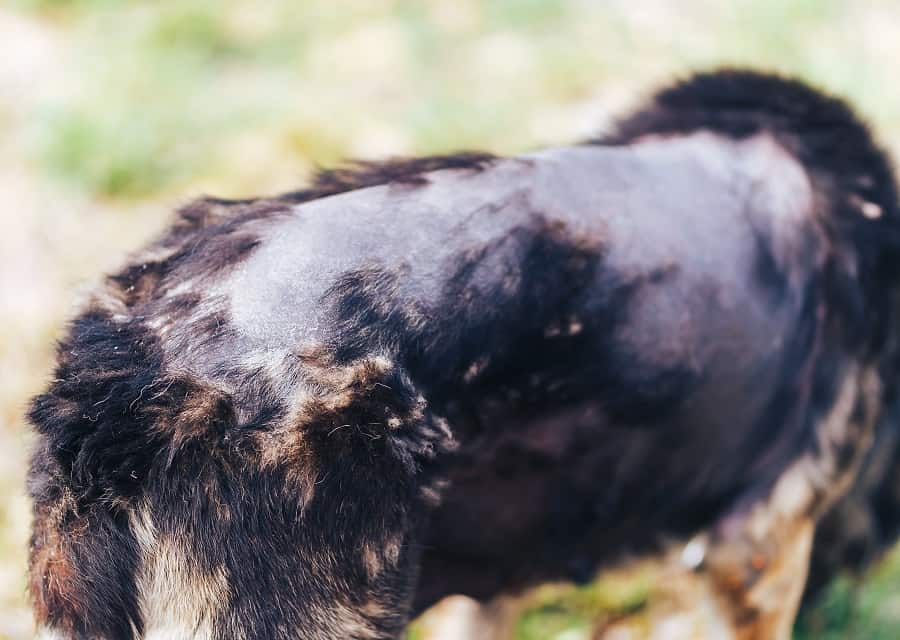
There are two different types of alopecia which are particularly common in dachshunds; Color Dilution and Pinnal.
Alopecia is the general term for hair loss and it happens as a result of an overactive immune system. The immune system begins attacking healthy cells such as hair follicles.
Color Dilution Alopecia is most common in blue and fawn colored weiner dogs.
This type of alopecia is a result of breeding out solid colors, such as brown or black, to dilute the coat.
The onset of this condition begins anywhere from six months to three years of age.
type of alopecia is a result of breeding out solid colors, such as brown or black, to dilute the coat.
The onset of this condition begins anywhere from six months to three years of age.
Other signs include dry, scaly skin and infected hair follicles.
Though the infection will need to be treated, the condition itself can’t be prevented. Dogs with this condition are encouraged to avoid breeding, to stop the disorder being passed on.
Pinnal Alopecia is normal pattern baldness and you’ll be able to spot it by the location of the hair loss; behind the ears.
It can begin between six months to one year old and the pattern will be the same on both ears. At around eight or nine years old, the ears may be hairless.
Acanthosis Nigricans
A rare cause of hair loss in dachshunds is a condition known as Acanthosis Nigricans. This condition is common in doxies and usually shows up before they’re a year old.
It can even affect humans. The condition is a hyperpigmentation of the skin and shows up in uneven patches.
The patches are darker than the dog’s skin color and are usually found on the chest down to the groin.
The affected areas don’t usually become inflamed but can do if they are irritated. This can then lead to skin lesions which give off an unpleasant odor.
In the best case scenario, this condition can be harmless. But you may want to get your pup checked out anyway.
It should be straightforward for the vet to diagnose the condition from appearance, but they may perform skin tests to rule out other diseases.
Cushing’s Disease
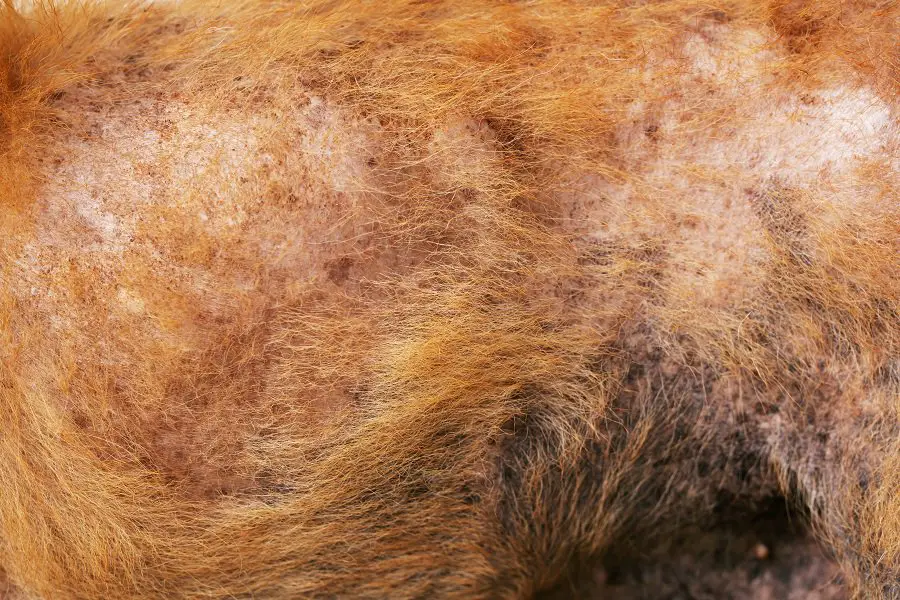
This disease represents an overproduction of cortisol; the hormone we produce when we’re stressed.
It’s normal to produce it when faced with a stressful situation, but it can be dangerous if it builds up in the blood.
Other symptoms include excessive panting, eating and drinking, and developing a bloated belly. This is because cortisol stimulates the appetite.
Not to mention, skin infections, which can cause hair loss as well. Blood and urine tests, plus a physical exam, will be used to diagnose the disorder.
If the results are positive, the vet will need to determine the cause to recommend a treatment plan.
Hypothyroidism
This term refers to an underactive thyroid, as opposed to hyperthyroidism which is an overactive thyroid.
The thyroid gland is found in the neck and regulates hormone production.
An underactive thyroid is slow to produce hormones, notably those needed for a healthy metabolism.
It makes sense that one of the effects of hypothyroidism is weight gain. Alongside other cosmetic complaints such as scaly or infected skin and a dull, patchy coat.
Since this is a serious condition, your doxie will need to take medication for their entire lifetime. Plus, you will need to get them onto a special diet.
The vet will be able to diagnose this condition by carrying out blood and urine tests.
If you notice any of the above symptoms, and general lethargy or depression, check in with a vet right away.
Allergies
In this case, hair loss is caused by scratching or pulling out fur. A dog’s skin becomes irritated when they have an allergic reaction and they will try to relieve it.
There are several sources of allergens that could affect your weiner dog.
Food
Not one to be overlooked – some dogs are allergic to certain types of food, like humans.
It could be something that you’re feeding them regularly, or something they snaffled once.
The only way to determine a food allergy is to consult a vet who will be able to do tests.
If you notice that your dog has diarrhea or vomiting after eating certain foods, check in with a specialist. Other symptoms include excessive licking and ear infections.
Insect Bites
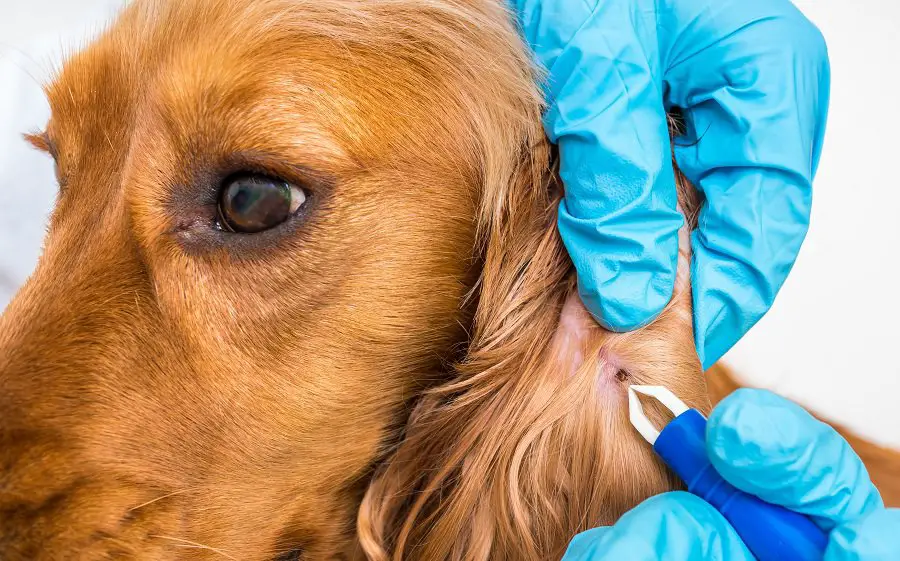
Any bug bite can provoke an allergic reaction and therefore scratching and biting. But, some are more likely to cause hair loss than others.
Fleas are thought to be the biggest cause of hair loss in dogs. These little pests bite your dog to feed on their blood which causes itchy skin.
An infestation of mites – also known as ‘mange’ – causes the same phenomenon.
You’ll know if your doxie has an infestation of either of these pests as they will be scratching non-stop.
When you can get close to their skin, you’ll notice that it’s often inflamed and infected. Luckily, these complaints are easy to diagnose and treat.
Medicine
Unfortunately, the very thing that’s treating one issue could cause another. Many medicines list rashes or skin complaints as side effects.
This will lead to scratching and eventually hair loss. If your dog is taking any medication, check the package or ask the vet whether this could be the cause.
If it turns out that the medicine is causing hair loss, depending on the duration of the treatment, the vet will be able to tell you the best course of action.
If it’s a short term treatment, they will likely prescribe a cream, or a cone if your pup is chewing and biting their skin.
Trauma
If your furry friend suffered an upsetting event, they may lose their fur as a consequence. It can be especially prevalent in rescue dogs who had a difficult early life.
But it can also be caused by a dog attack, an accident or having an invasive treatment or surgery.
Since our dogs can’t talk to us and let us know that they’re having a tough time, their emotions are manifested in their physical health.
Treatment
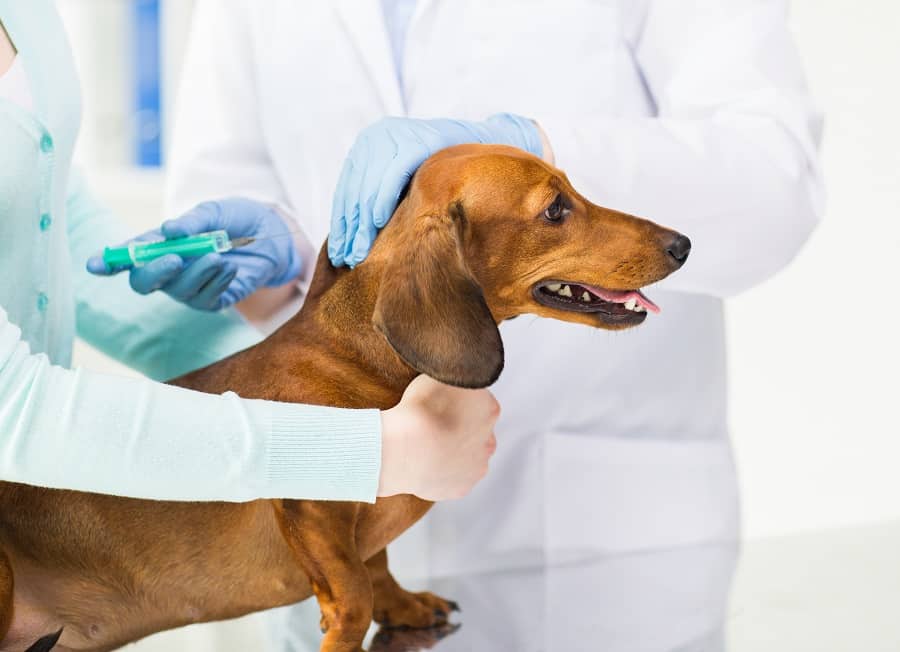
The best course of action depends on the cause of the hair loss. In cases where it’s cosmetic, it’s likely that the vet will prescribe creams and ointments.
They will try to promote hair regrowth but, sometimes this isn’t possible. So instead, they concentrate on keeping your dachshund’s exposed skin healthy.
Your pup might also need to take antibiotics if their skin gets infected.
If the hair loss is a symptom of a more serious condition, the vet will recommend the best treatment for the cause.
Once they have finished their course of medicine or it starts to kick in, you should notice that their coat starts to return to normal.
In the meantime though, you might wish to ease their discomfort.
For your part, you can administer veterinarian-approved creams. These creams soothe the area and discourage scratching.
If the hair loss is going to be temporary, you might want to get a dog cone while they wait for treatment. But, this isn’t a long-term solution.
You can also invest in a dog coat made from non-irritating materials. This is a good idea if the hair loss is permanent as dachshunds are prone to feeling the cold.
From a nutritional standpoint, it’s important to feed your doxie a diet rich in vitamins and minerals. Vitamins A – E, iron and protein all promote hair growth.
Be sure to find out whether your chosen food source contains all the essential nutrients. Your vet might even be able to recommend supplements based on your dog’s diet.
Foods that are particularly important contain fatty acids, so be sure to always check the label or consult a specialist.

